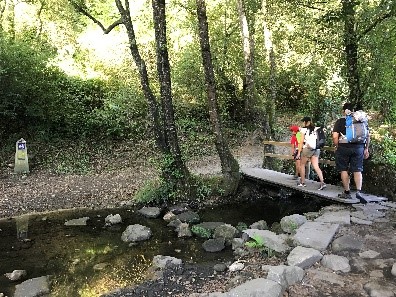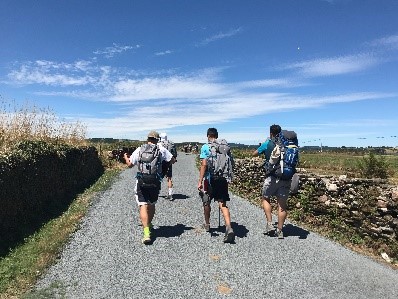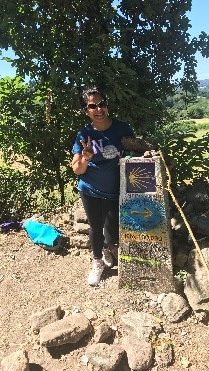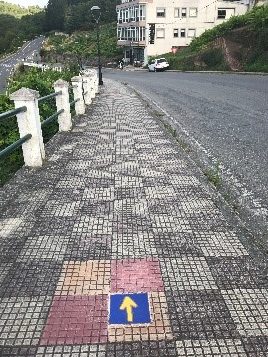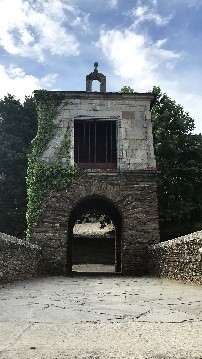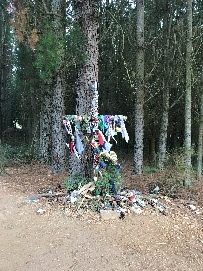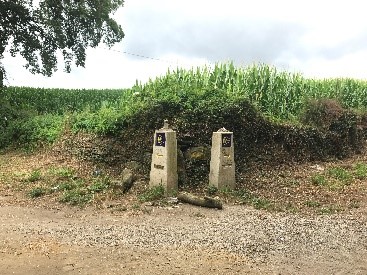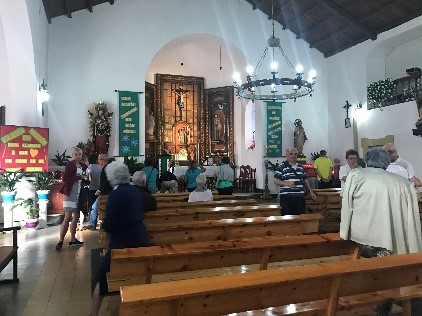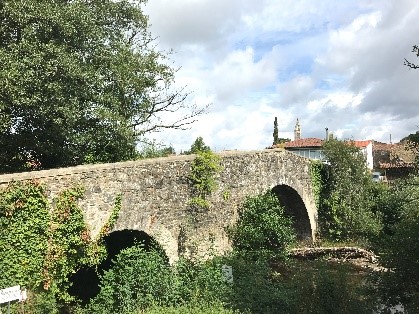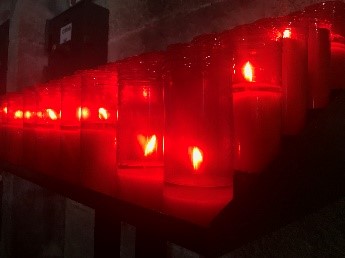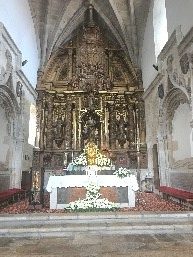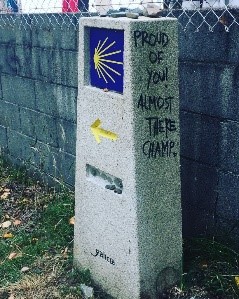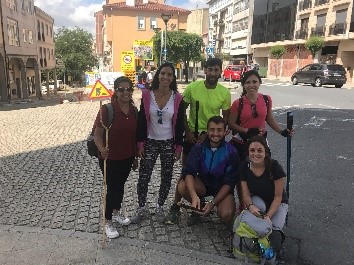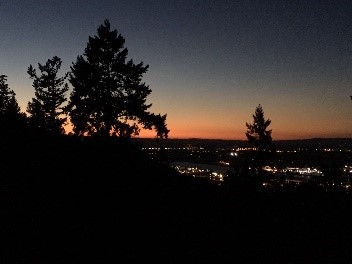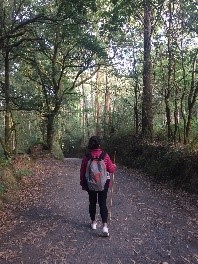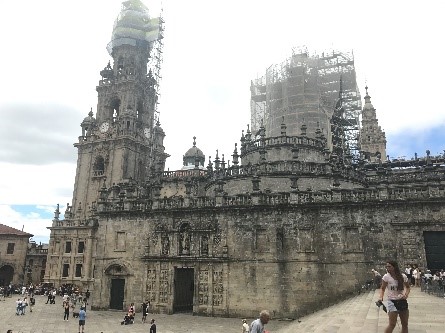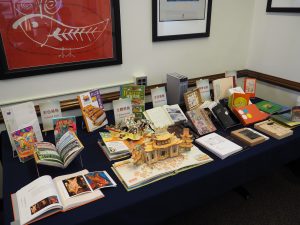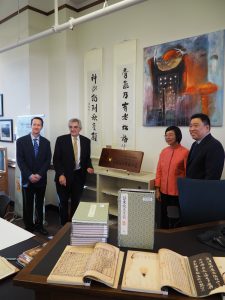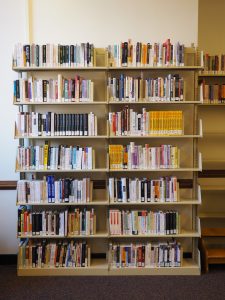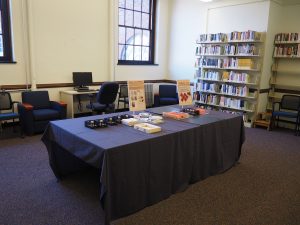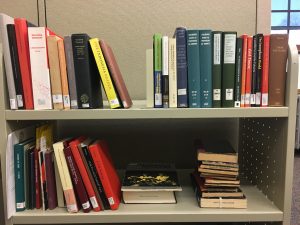
This cart of in the IAS library holds books that GAs Laura and Mariah are using to complete research for their digital projects.
This year’s IAS graduate assistants, Laura Rocco and Mariah Schaefer, are both developing online research tools for area studies topics. These projects will be completed over the next several months and presented at the library in February. Laura and Mariah describe their projects below:
Laura – Balai Pustaka: a snapshot of publishing in Indonesia
Balai Pustaka (BP) is a state-run publisher in Indonesia that provides a unique understanding of print publishing, censorship, language development, and Dutch colonialism in Indonesia. Founded as the Commissie voor de Inlandsche School en Volkslectuur (the Commission for People’s Education and Reading) in 1908 and renamed Balai Pustaka in 1917, BP changed hands in WWII when the Japanese occupied Indonesia, and again in 1949 when Indonesia gained independence from the Dutch. Balai Pustaka publications range from the earliest Indonesian novels in the 1920s to the later textbook and educational materials of the post-colonial period.
An online research portal for materials related to Balai Pustaka will be published through the International and Area Studies Library using the Omeka platform. This tool will connect reference sources about BP, sources about Indonesian publishing, and historical context about the Dutch colonial and post-colonial periods with information about Balai Pustaka holdings at the University of Illinois at Urbana-Champaign. The University Library holds more than 150 titles from this publisher from the post-colonial period (1951-), which can be of great value to researchers studying the political, social, and cultural histories of Indonesia.
Mariah – Research Guide to Timor-Leste (East Timor)
Timor-Leste is one of the youngest countries in the world, having officially gained independence in 2002. It was a Portuguese colony from the 1510s until Portugal withdrew in 1975. Indonesia invaded the country later that same year and stayed in power until 1999, when the majority of East Timorese voted for independence and the United Nations stepped in to help with the transition. Timor-Leste is home to 1.3 million people, who speak many local languages (Portuguese and Tetum are the official languages, and Indonesian and English are the working languages). Because the country is young, Timor-Leste is still building its national library and archives.
A “Research Guide to Timor-Leste (East Timor)” is in production and will join the other library guides by the International and Area Studies Library early in the spring semester. Not a lot of libraries have guides about Timor-Leste, so this tool aims to be really useful for researchers. The research guide will provide a variety of resources related to the country’s history, languages, cultural heritage, and government.
The time, date, and location of these presentations will be listed on the IAS calendar in early Spring, at which time these sites will also be published. Any questions can be directed to Laura Rocco or Mariah Schaefer.


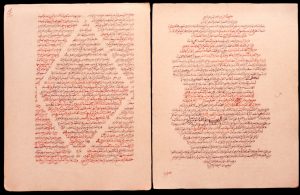
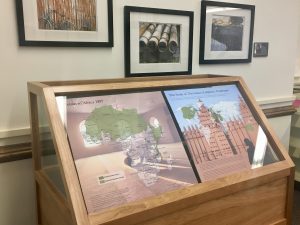
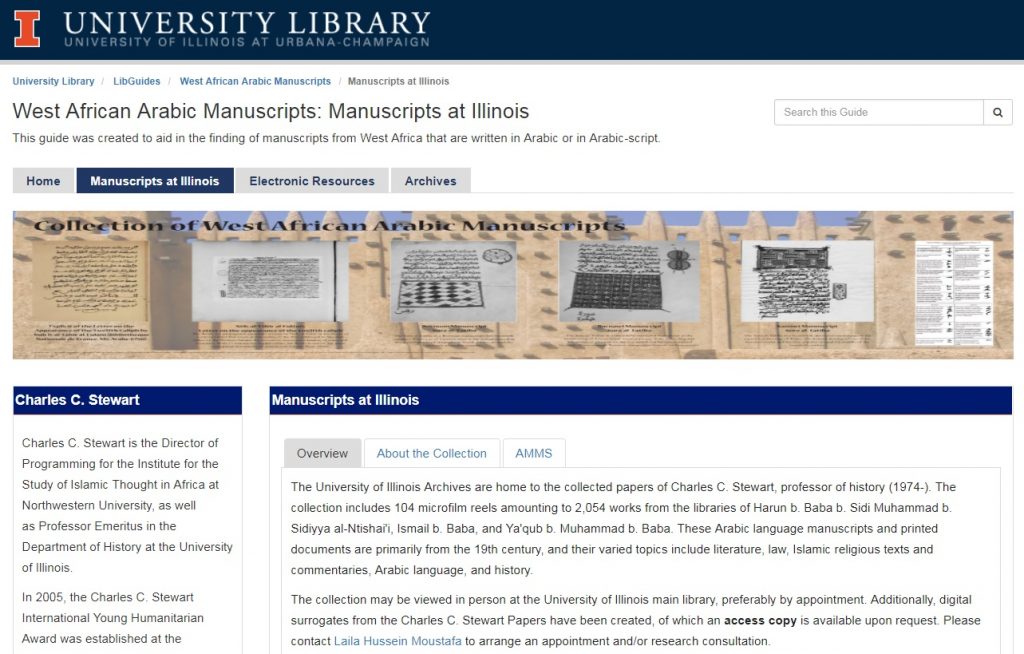

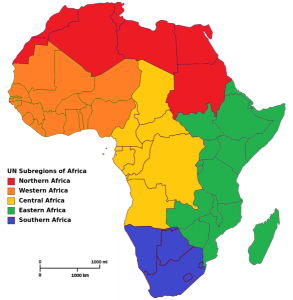


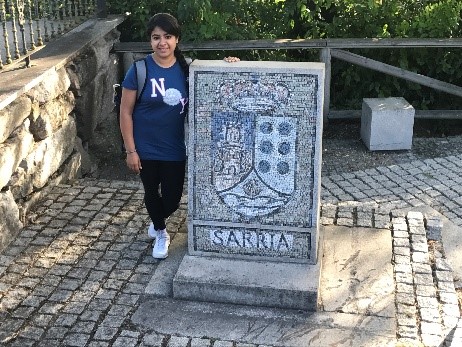
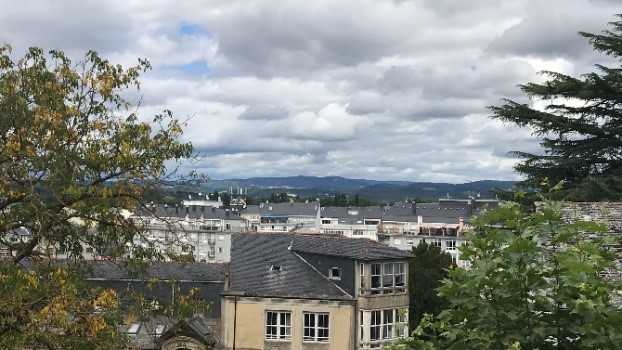
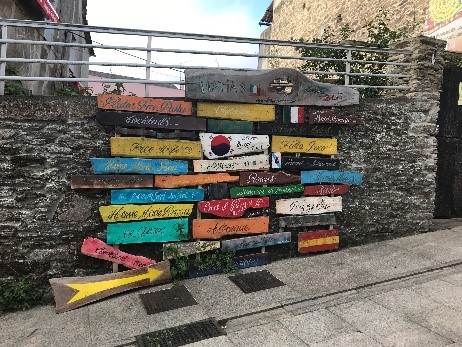
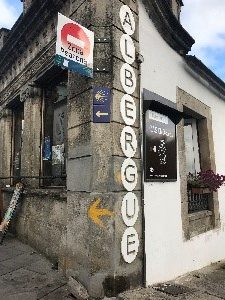 is not required to reach the next destination which was a village named Portomarin. The scenic path towards Portomarin was through a dense forest, rolling grasslands with beautiful mountains around and meandering roads. I met a German woman, Wiebke, who must have been in her early forties. After introducing myself, I couldn’t stop myself but ask her about her reasons for doing the walk. She mentioned that her friend had done it a couple of years ago on the route that goes right outside her house in her hometown. She had seen the movie “The Way” and was also reading about personal experience of a man who had done the walk. This all inspired her a great deal that motivated her to give it a try. She had a family in Germany but she decided to walk by herself. She was a lovely companion. The journey was also made interesting by a group of young Spanish men I came across while walking, and who were singing lovely Spanish songs.
is not required to reach the next destination which was a village named Portomarin. The scenic path towards Portomarin was through a dense forest, rolling grasslands with beautiful mountains around and meandering roads. I met a German woman, Wiebke, who must have been in her early forties. After introducing myself, I couldn’t stop myself but ask her about her reasons for doing the walk. She mentioned that her friend had done it a couple of years ago on the route that goes right outside her house in her hometown. She had seen the movie “The Way” and was also reading about personal experience of a man who had done the walk. This all inspired her a great deal that motivated her to give it a try. She had a family in Germany but she decided to walk by herself. She was a lovely companion. The journey was also made interesting by a group of young Spanish men I came across while walking, and who were singing lovely Spanish songs.